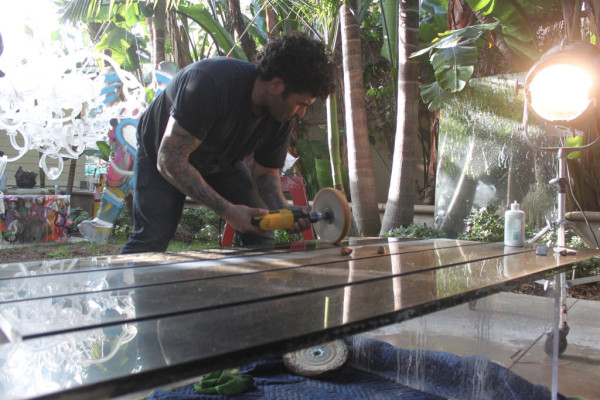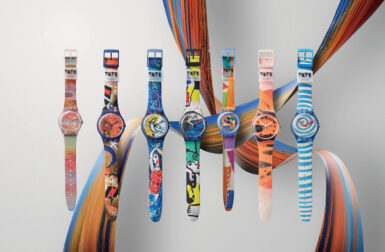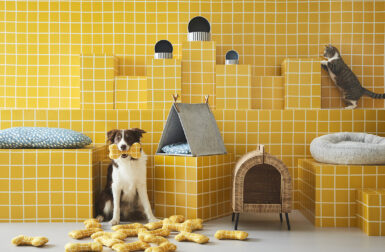Aaron R. Thomas’ motto is “If you can dream it, I can build it.” And I don’t doubt he can! As I was perusing his website, I quickly realized that not only does this guy know his way around acrylic, but he’s also a talented painter and photographer, too.
Having worked with such brands as Ralph Lauren, Verizon, Mercedes-Benz and Apple, LA-based Thomas has a client list that’s just about as long as his capabilities. He specializes in working with acrylic, creating fantastic modern sculptures, furniture and decor, and even using it as a canvas. I was curious as to how he got started working with such a unique material and talked to him about his background, creative process as well as what’s next:
You’re more than just a designer – you’re an artist, too. How do you tell people what you do and how do you define yourself?
I’m Batman! My career has been a never-ending saga where I don’t fit in anyone’s pigeonhole. I grew up in my dad’s workshop, studied business and was trained in architecture and engineering. Art came naturally. As a designer who is also a master craftsman I’m fortunate to have the capabilities of building someone’s design, redesigning or engineering it to its highest functioning potential and manufacturing it with the bottom line in mind. It’s the holy trifecta in the business of design (design/build/economics) and when it’s coming from one source quality is easier to manage. In short my motto is, ‘If you can dream it, I can build it.’
What’s your creative process like? Can you walk us through it?
Generally, it begins by qualifying an idea as profitable. Then it’s a process of cultivating with my team all the elements (aesthetic and technical) that distinguish the design as the ultimate version of its kind. Then I reverse engineer it. I still draw all of my designs by hand. The next step is making the first prototype and developing the design for mass production (maintaining the highest standards at the lowest cost). It sounds more like a business plan than a creative process, but that’s what artists need to understand—it’s a disciplined practice, not a whim of creative inspiration that makes an artist successful.
How did you get interested in LuciteLux® as a material?
My father is a master craftsman in acrylic. I grew up pulling scraps of plastic out of the trash, riding it back to the shop on my bicycle and making things with it. I love science, so for me the design process begins at a molecular level. I’ve studied other fields and mastered other materials, but LuciteLux® is a fairly new material for me and it’s interesting to be part of innovation. I’m experimenting, prototyping and inventing things with LuciteLux® that have never been done before.
What do you like best about working with it?
Its infinite untapped possibilities. Structurally, it’s half the weight of glass and it’s shatterproof, even bulletproof if you want it to be. And we’re in an era where we have the technology to make LuciteLux® look like anything you want. It’s fun to be able to bring something new to the design conversation; to open people’s minds to utilizing what started as aerospace technology nearly 80 years ago in something so far from it like, fashion. Right now, my NASA engineer friend and I are developing my wife’s jewelry collection where we’re using the same technology that goes into the Department of Defense to float diamonds in LuciteLux®—that’s just cool.
What are some of the challenges of using a material like LuciteLux®?
Clear acrylic is probably the most unforgiving material to work with (considering there’s nowhere to hide mistakes), so to own something masterfully created with the material is typically considered a trophy piece for the connoisseur of craftsmanship. This is why people often prefer I build their designs for them.
Who are some of your favorite current designers and artists?
George Beylerian is a genius, Marc Jacobs is too and Banksy is entertaining.
Where do you draw most of your influence?
I like to visit New York at least once a year—I love the city’s energy, architecture, shopping, trends. It has everything. I work the stock market as well so I like to be attuned to the underlying influence that international business and economics has on our lives.
What are you currently working on?
I’m developing a new lighting line, my wife’s jewelry collection, a crib for a high-end baby furniture company and several hotel projects.
This post is part of our media partnership with LuciteLux®. Learn more about the LuciteLux® 2014 JUST IMAGINE Awards here.





























